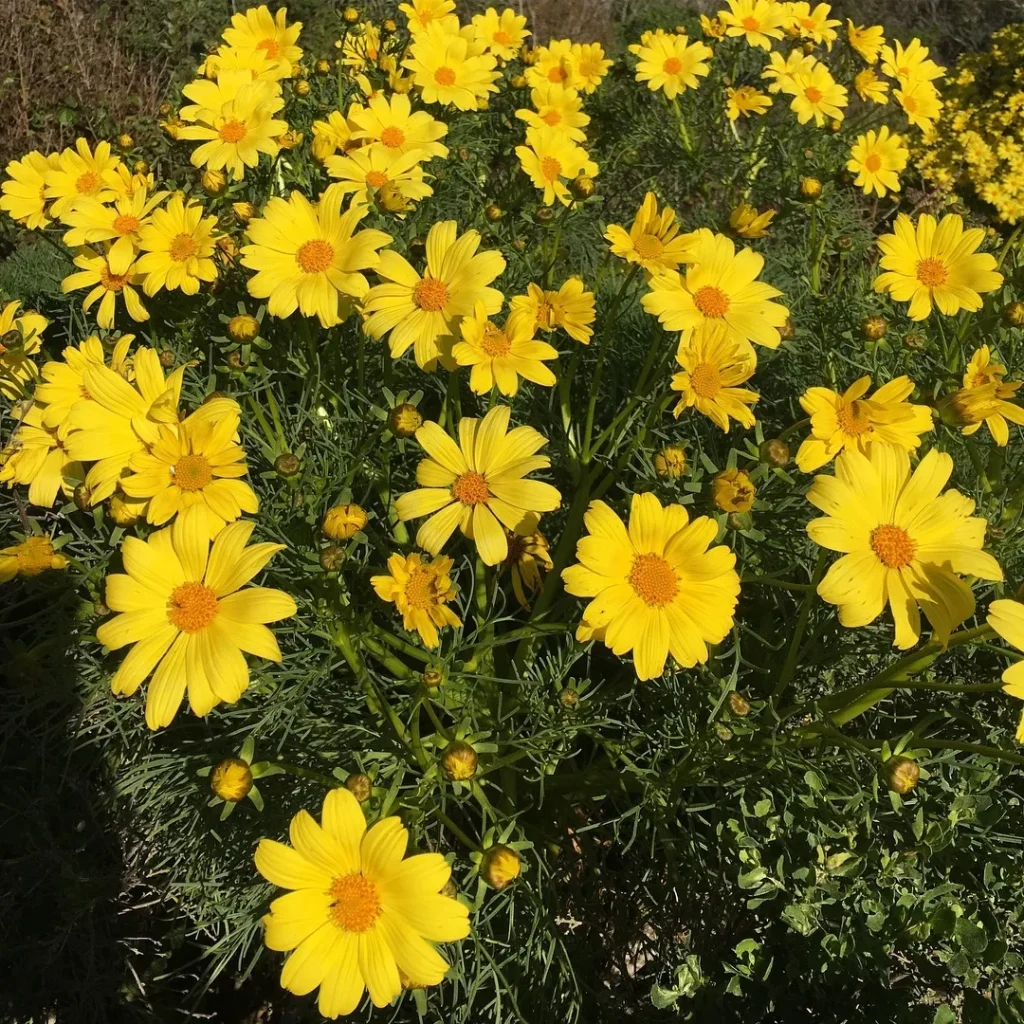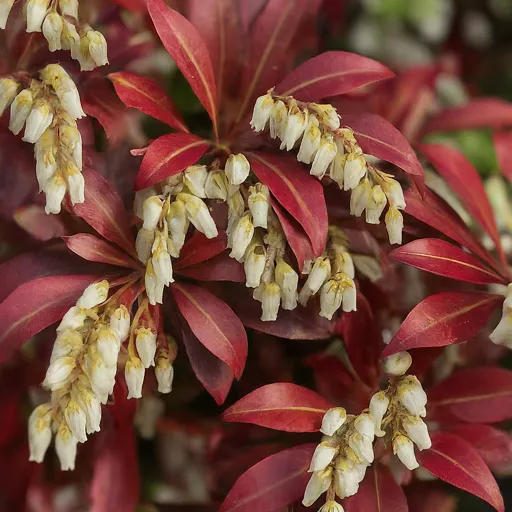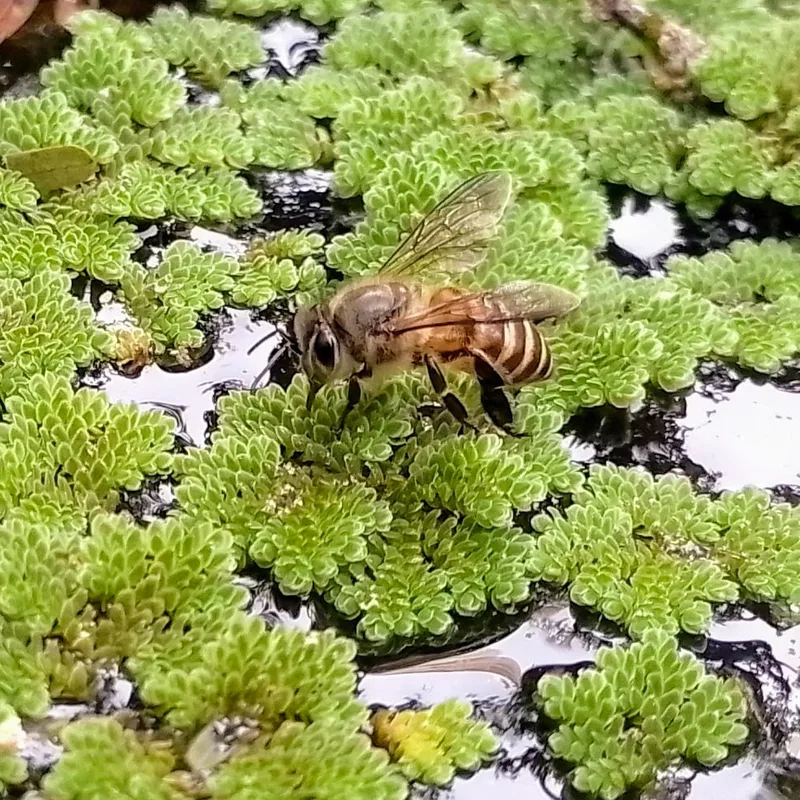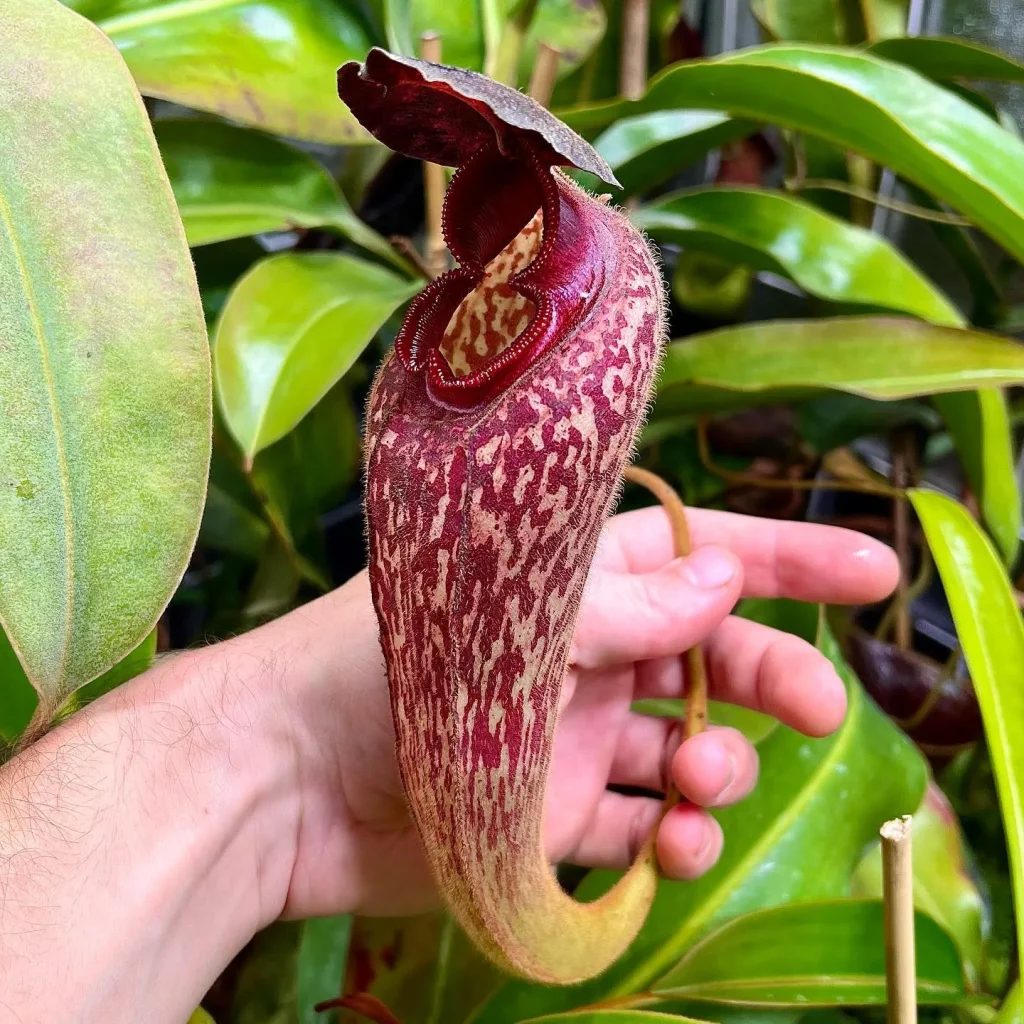July 13 – Abutilon
"Abutilon, the flowering maple, defines July 13."
Abutilon represents beauty and humility. You are modest yet deeply admired for your inner and outer grace. Like its delicate flowers, you brighten the lives of others with quiet elegance.

Falling for Flowering Maples: An Abutilon Love Story
My name is Ferb Vu, and I have a confession. I’m utterly smitten with Abutilon. No, not a person, though the name does have a certain charm. I’m talking about the genus Abutilon, those delightful flowering plants that go by the common name “flowering maple” or “parlor maple.” While they aren’t actually maples, their leaves do bear a resemblance, and the vibrant, bell-shaped flowers are enough to capture anyone’s heart.
My fascination with Abutilon began innocently enough. I was wandering through a local nursery, overwhelmed by the sheer variety of plants, when a splash of color caught my eye. There, nestled amongst the ferns and begonias, was a pot overflowing with fiery orange blooms. The plant was labeled Abutilon ‘Tangerine Dream,’ and it was love at first sight.
I brought that Abutilon home and gave it a place of honor on my sun porch. It thrived, rewarding me with a constant display of cheerful flowers. Soon, I was hooked. I began researching the genus, discovering a world of diverse and captivating species.
A Diverse Genus
The genus Abutilon belongs to the Malvaceae family, which also includes hibiscus and cotton. It’s a large genus, boasting over 170 species. These plants are native to tropical and subtropical regions around the world, from the Americas to Africa, Asia, and Australia.
Abutilon species vary greatly in size and form. Some are compact shrubs, perfect for container gardening, while others can grow into small trees. Their leaves also exhibit a range of shapes and textures, from smooth and glossy to velvety and lobed. But it’s the flowers that truly steal the show. They come in a kaleidoscope of colors, including shades of red, orange, yellow, pink, white, and even bi-colors.
Here are:
- Abutilon abutiloides (Jacq.) Garcke ex Hochr.
- Abutilon affine (Spreng.) G.Don
- Abutilon albidum (Willd.) Sweet
- Abutilon alii Abedin
- Abutilon amplum Benth.
- Abutilon andrewsianum W.Fitzg.
- Abutilon andrieuxii Hemsl.
- Abutilon anglosomaliae Cufod. ex Thulin
- Abutilon angulatum (Guill. & Perr.) Mast.
- Abutilon anodoides A.St.-Hil. & Naudin
- Abutilon appendiculatum K.Schum.
- Abutilon arenarium C.T.White
- Abutilon arequipense Ulbr.
- Abutilon auritum (Wall. ex Link) Sweet
- Abutilon australiense (Hochr. ex Britten) Nimbalkar, Nandikar & Sardesai
- Abutilon austroafricanum Hochr.
- Abutilon balansae Hassl.
- Abutilon bastardioides Baker f. ex Rose
- Abutilon benedictum Bunbury
- Abutilon berlandieri A.Gray
- Abutilon bidentatum (Hochst) A.Rich.
- Abutilon bivalve (Cav.) Dorr
- Abutilon bracteosum Fryxell
- Abutilon buchii Urb.
- Abutilon burandtii Fryxell
- Abutilon bussei Gürke ex Ulbr.
- Abutilon californicum Benth.
- Abutilon calliphyllum Domin
- Abutilon carinatum Krapov.
- Abutilon coahuilae Kearney
- Abutilon cryptopetalum (F.Muell.) Benth.
- Abutilon cunninghamii Benth.
- Abutilon cuspidatum Pittier
- Abutilon densiflorum (Hook. & Arn.) Walp.
- Abutilon dinteri Ulbr.
- Abutilon dispermum (Hochr.) Fryxell
- Abutilon divaricatum Turcz.
- Abutilon dugesii S.Watson
- Abutilon durandoi Mattei
- Abutilon eggelingii Verdc.
- Abutilon eremitopetalum Caum
- Abutilon erythraeum Mattei
- Abutilon eufigarii Chiov.
- Abutilon exstipulare (Cav.) G.Don
- Abutilon falcatum A.St.-Hil. & Naudin
- Abutilon flanaganii A.Meeuse
- Abutilon fraseri (Hook.) Walp.
- Abutilon fruticosum Guill. & Perr.
- Abutilon fugax Domin
- Abutilon fuscicalyx Ulbr.
- Abutilon galpinii A.Meeuse
- Abutilon gebauerianum Hand.-Mazz.
- Abutilon geranioides (DC.) Benth.
- Abutilon ghafoorianum Abedin
- Abutilon giganteum (Jacq.) Sweet
- Abutilon glabriflorum Hochr.
- Abutilon grandidentatum Fryxell
- Abutilon grandiflorum G.Don
- Abutilon grandifolium (Willd.) Sweet
- Abutilon grantii A.Meeuse
- Abutilon greveanum (Baill.) Hochr.
- Abutilon grewiifolium (Ulbr.) Krapov.
- Abutilon guineense (Schumach.) Baker f. & Exell
- Abutilon haenkeanum C.Presl
- Abutilon haitiense Urb.
- Abutilon halophilum F.Muell. ex Schltdl.
- Abutilon hannii Baker f.
- Abutilon herzogianum R.E.Fr.
- Abutilon hirtum (Lam.) Sweet
- Abutilon hulseanum (Torr. & A.Gray) Torr. ex Baker f.
- Abutilon hypoleucum A.Gray
- Abutilon ibarrense Kunth
- Abutilon inaequilaterum A.St.-Hil.
- Abutilon incanum (Link) Sweet
- Abutilon inclusum Urb.
- Abutilon indicum (L.) Sweet Plant FAQs: Abutilon Indicum – Indian Mallow
- Abutilon insigne Planch.
- Abutilon itatiaiae R.E.Fr.
- Abutilon jafrii F.Naseer, A.Noor & A.Rahman
- Abutilon julianae Endl.
- Abutilon karachianum S.A.Husain & Baquar
- Abutilon lauraster Hochr.
- Abutilon leonardii Urb.
- Abutilon lepidum (F.Muell.) A.S.Mitch.
- Abutilon leucopetalum (F.Muell.) Benth.
- Abutilon lineatum (Vell.) K.Schum.
- Abutilon listeri Baker f.
- Abutilon lobulatum Domin
- Abutilon longicuspe Hochst. ex A.Rich.
- Abutilon longilobum F.Muell.
- Abutilon macrocarpum Guill. & Perr.
- Abutilon macropodum Guill. & Perr.
- Abutilon macrum F.Muell.
- Abutilon macvaughii Fryxell
- Abutilon malachroides A.St.-Hil. & Naudin
- Abutilon malacum S.Watson
- Abutilon malvifolium (Benth.) J.M.Black
- Abutilon mangarevicum Fosberg
- Abutilon mauritianum (Jacq.) Medik.
- Abutilon menziesii Seem.
- Abutilon micropetalum Benth.
- Abutilon minarum K.Schum.
- Abutilon mitchellii Benth.
- Abutilon mollicomum (Willd.) Sweet
- Abutilon mollissimum (Cav.) Sweet
- Abutilon mucronatum J.E.Fryxell
- Abutilon multiflorum R.E.Fr.
- Abutilon myrianthum (Planch. & Linden) Krapov.
- Abutilon neelgherrense Munro
- Abutilon nigricans G.L.Esteves & Krapov.
- Abutilon nobile Domin
- Abutilon orbiculatum (DC.) G.Don
- Abutilon otocarpum F.Muell.
- Abutilon oxycarpum (F.Muell.) F.Muell. ex Benth.
- Abutilon pakistanicum Jafri & Ali
- Abutilon palmeri A.Gray Plant FAQs: Abutilon Palmeri
- Abutilon paniculatum Hand.-Mazz.
- Abutilon pannosum (G.Forst.) Schltdl.
- Abutilon parishii S.Watson
- Abutilon parvulum A.Gray
- Abutilon pedatum Ewart
- Abutilon pedrae-brancae K.Schum.
- Abutilon pedunculare Kunth
- Abutilon percaudatum Hochr.
- Abutilon permolle (Willd.) Sweet
- Abutilon persicum (Burm.f.) Merr.
- Abutilon picardae Urb.
- Abutilon pilosicalyx Verdc.
- Abutilon pilosocinereum A.Meeuse
- Abutilon pinkavae Fryxell
- Abutilon pitcairnense Fosberg
- Abutilon piurense Ulbr.
- Abutilon pritchardii Exell & Hillc.
- Abutilon procerum Fryxell
- Abutilon pseudocleistogamum Hochr.
- Abutilon pubistamineum Ulbr.
- Abutilon pycnodon Hochr.
- Abutilon pyramidale Turcz.
- Abutilon ramiflorum A.St.-Hil.
- Abutilon ramosum (Cav.) Guill. & Perr.
- Abutilon ranadei Woodrow & Stapf
- Abutilon reflexum (Lam.) Sweet
- Abutilon rehmannii Baker f.
- Abutilon reventum S.Watson
- Abutilon roseum Hand.-Mazz.
- Abutilon rotundifolium Mattei
- Abutilon sachetianum Fosberg
- Abutilon sandwicense (O.Deg.) Christoph.
- Abutilon schaeferi Ulbr.
- Abutilon schinzii Ulbr.
- Abutilon sepalum S.A.Husain & Baquar
- Abutilon simulans Rose
- Abutilon sinaicum Mattei
- Abutilon sinense Oliv.
- Abutilon somalense Mattei
- Abutilon sonneratianum (Cav.) Sweet
- Abutilon sphaerostaminum Hochr.
- Abutilon stenopetalum Garcke
- Abutilon straminicarpum Fryxell
- Abutilon subprostratum Verdc.
- Abutilon substellatum Phuph. & Poopath
- Abutilon subumbellatum Philcox
- Abutilon subviscosum Benth.
- Abutilon tehuantepecense Fryxell
- Abutilon terminale (Cav.) A.St.-Hil.
- Abutilon theophrasti Medik. Plant FAQs: Abutilon Theophrasti – Velvetleaf
- Abutilon thyrsodendron Griseb.
- Abutilon trisulcatum (Jacq.) Urb.
- Abutilon tubulosum (A.Cunn. ex Hook.) Walp.
- Abutilon turumiquirense Steyerm.
- Abutilon umbelliflorum A.St.-Hil.
- Abutilon venosum Lem.
- Abutilon virginianum Krapov.
- Abutilon viscosum (L.) Dorr
- Abutilon whistleri Fosberg
- Abutilon wituense Baker f.
- Abutilon wrightii A.Gray
- Abutilon xanti A.Gray
Abutilon vs Sleeping Hibiscus
When I compared Abutilon to Sleeping Hibiscus, I found Abutilon’s blooms were more vibrant and lasted longer, making my garden feel more colorful for an extended period.
Does abutilon need full sun?
Abutilon thrives in full sun, but my experience suggests it can handle a bit of shade too. I’ve found that placing it where it gets ample sunlight during the day promotes healthier growth and more abundant flowering. However, too much intense sunlight can sometimes lead to leaf burn, so it’s essential to strike a balanhce.
How to care for abutilon?
Caring for Abutilon is relatively straightforward. I’ve learned to keep the soil consistently moist but not waterlogged. Regular fertilization during the growing season has helped mine stay vibrant and lush. Pruning occasionally to remove dead or leggy growth also encourages bushier growth and more flowers.
How to collect abutilon seeds?
Collecting Abutilon seeds is a fun and rewarding process. After the flowers fade and the seed pods develop, I wait until they turn brown and slightly dry before harvesting them. Then, I carefully open the pods to extract the seeds. Storing them in a cool, dry place until the next planting season ensures viability.
How to propagate abutilon?
Propagating Abutilon is something I’ve done successfully through stem cuttings. I choose healthy stems, remove any flowers or buds, and trim the cutting just below a leaf node. Placing the cutting in a pot with moist soil and keeping it warm and humid encourages root growth. Before long, I have a new plant ready to grow.
Is abutilon a perennial?
Abutilon is indeed a perennial, which is one reason I enjoy having it in my garden. Its ability to come back year after year brings a sense of continuity and reliability to my outdoor space. With proper care, it continues to delight with its charming blooms.
Is abutilon poisonous?
As far as I know, Abutilon isn’t considered poisonous to humans or pets, which is reassuring. However, like with any plant, it’s wise to avoid ingestion and keep it out of reach of curious pets or small children, just in case.
When to prune abutilon?
I’ve found that pruning my Abutilon after its flowering period has ended helps keep it in good shape. Removing any dead or overgrown branches encourages new growth and prevents it from becoming too leggy. Plus, it tidies up the plant and keeps it looking its best.
Why is my abutilon not flowering?
When my Abutilon isn’t flowering as expected, I’ve discovered a few possible reasons. Sometimes it’s due to insufficient sunlight, other times it’s because of over-fertilization. Ensuring it’s getting the right amount of light and nutrients usually helps encourage more blooms.
Will abutilon grow in shade?
While Abutilon prefers full sun, I’ve found that it can tolerate some shade, especially during the hottest part of the day. In fact, a bit of dappled shade can sometimes help prevent leaf burn in particularly sunny locations.
How to grow abutilon in a pot?
Growing Abutilon in a pot is a great option, especially if you have limited outdoor space. I’ve had success using a well-draining potting mix and ensuring the pot has drainage holes to prevent waterlogging. Regular watering and occasional fertilization keep it healthy and thriving.
How to overwinter abutilon?
Overwintering Abutilon can be a bit tricky depending on your climate. If you live in a colder area, bringing it indoors before the first frost is essential. I’ve found that placing it in a sunny spot and reducing watering helps it survive the winter months. Alternatively, you can prune it back and store it in a cool, dark place until spring.
If i die, water my plants!



